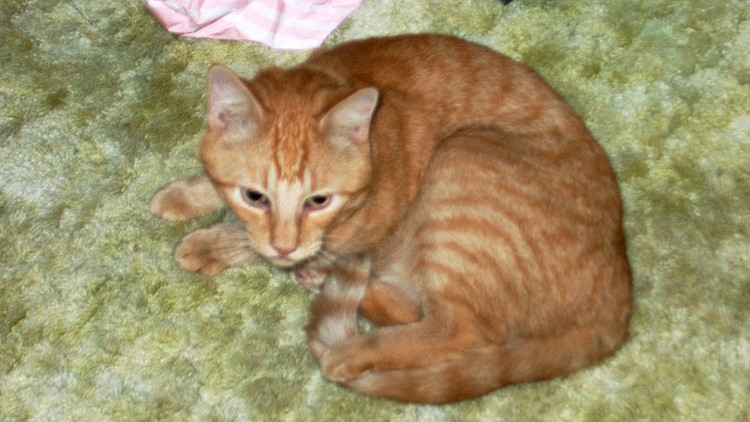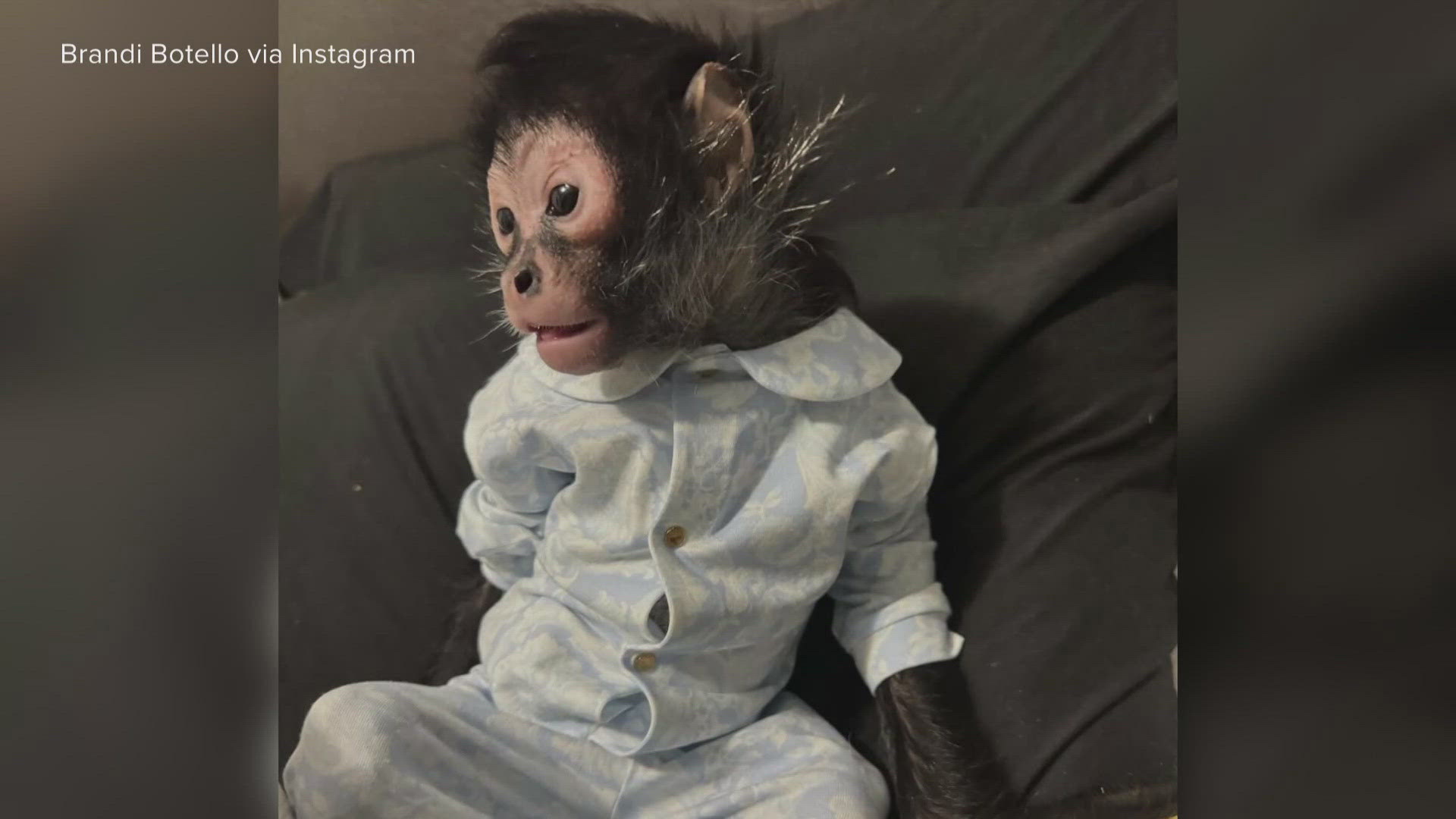Have you ever wondered what 14 years equals in cat years?
(Hint: It's a really long time.)
For an orange tabby named Thomas Jr. — T2 for short — it's about 72 years, the time it's been since he last saw his owner, Perry Martin, of Fort Pierce.
But because of a tiny microchip, T2 was reunited with Martin last week at the Humane Society of the Treasure Coast.
"When I got the call and someone said, 'What if we told you T2 was alive?' I figured it was a mistake," Martin said. "It was too crazy to believe."


That phone call was from Martin's veterinarian, who, in 2002, had implanted T2 with a microchip. If T2 ever went missing, it would make him easier to identify once he'd been found.
Two years later, after Hurricane Jeanne hit the Treasure Coast, Martin, 60, moved in with a friend in Stuart.
Just a few days after settling there, T2 escaped. "I looked for him, the neighbors looked for him, but no one could find him," he said. Martin filed a missing-cat report with the Humane Society of the Treasure Coast.
"With him being microchippped, I figured someone would find him and call me," he said. But that didn't happen and Martin assumed the worst: T2 had met his fate on Kanner Highway.
"I got done grieving and moved back home," Martin said.
Since T2's escape, Martin had moved twice, once to Ohio and then back to Fort Pierce.
"I just went on about my life," he said. "I guess T2 did, too, because who would have thought that after 14 years, you'd find your lost cat?"
But that's what happened March 9.
A Martin County Animal Services officer found the orange tabby as a stray and took him to the nonprofit shelter in Palm City. A simple wave of a wand near T2's shoulder blades quickly identified the microchip's unique ID, giving the shelter all the information it needed to find the cat's owner.
Deidre Huffman, shelter adoption manager, said staff was shocked when it found out T2 had been missing for 14 years.
"It's a crazy amount of time for a cat to be gone," she said. "No one took him to a vet to be scanned and no one reported that they had found him.
"Thankfully, he finally was found and brought to us. He was chipped and his owner's information was up to date."
That's the best — and most important — part about T2's adventure.
"Having a collar with a tag is a great first line of defense, but they come off," Huffman said. "Chips do not. It links you to the animal for the pet's life."
For Martin, a retired canine officer with the Fort Pierce Police Department, making sure his animals — working and personal — had microchips was second nature.
"If you care about your pet, chip 'em," he added. "Update your phone number and address, because if you don't, it's all a waste."
Each microchip, typically implanted between an animal's shoulder blades, is embedded with a unique identification number, said Janet Winikoff, director of education at the Humane Society of Vero Beach & Indian River County.
When a chipped animal is scanned with a wand, the wand beeps and the ID number is displayed, she said. The microchips are passive transponders. "We can tell from the ID number who the manufacturer is and if the microchip is registered," she said.
If the microchip isn't registered, the manufacturer still can find out who purchased it, such as a veterinarian or an animal shelter.
Microchips are inexpensive, usually $15-$40, and are implanted quickly, Winikoff said. "To have that insurance that your pet will always be able to be ID'd is so important," she said.
Statistics prove microchips work, too.
The chances of a microchipped dog being found and returned to its owner rise from 25 percent to 50 percent, said David Lynch, Port St. Lucie shelter manager with the Humane Society of St. Lucie County. For cats, it's 2 percent without a chip vs. 25 percent with one.
"Pets are our family," he said. "People sometimes spend months looking for their lost animal. Microchips make it so much easier for everyone."
The humane societies in Indian River, St. Lucie and Martin counties implant microchips and register them, but some shelters and veterinarians leave it up to pet owners.
That's why it's critical to register a microchip with its manufacturer and update personal information such as a new phone number or home address, Winikoff said.
Contacting the pet's veterinarian and local humane societies and shelters with updated information is a good idea, too.
It's also important that if someone finds a stray animal to take it to a local shelter that has a universal scanner. Universal scanners have the most up-to-date technology to find and scan most microchips, Winikoff added.
"Pets don't carry wallets with ID, so anything you can do to get your pet home, you want to try everything possible," she said.
Martin is happy T2 is home, but wonders how the cat spent the last 14 years.
"Could you imagine if he could talk for just 15 minutes to tell us what he's been through?" Martin asked. "He'd probably say, 'Why did you keep the door shut, Dad?'"
Martin said he would like to think T2 lived with a family.
"I just can't imagine him living in the wild," he said. "But I guess it's possible."
T2 is still in rough shape. At first, the cat wouldn't eat or drink and slept most of the day. But over the past few days, Martin said, T2 finishes his food and drinks water and is beginning to remember him.
"I will make sure he's comfortable for the rest of his time here," he said. "He's still skin-and-bones and he's 18 years old, but he's still T2."



